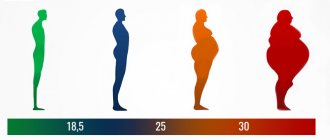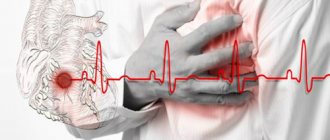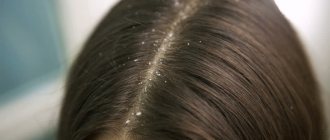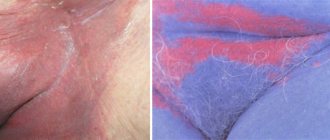The human body contains bacteria and fungi (Candida, yeast, yeast-like, etc.), which, in immunodeficiency states, begin to multiply, causing illness. At the initial stage, such a lesion can be easily treated with antimycotics (antifungal drugs), of which Pimafucin is recognized by medicine as one of the most effective.
How to take Pimafucin tablets
The drug is available in three dosage forms, one of which is tablets. Each tablet contains natamycin, a substance that successfully fights yeast fungi, among which the most common type of pathogen is Candida. Once in the gastrointestinal tract, natamycin is not absorbed and does not act systemically. Remaining in the intestines, the drug eliminates candidiasis and prevents the infection from spreading after antibiotic therapy. Diet does not matter when treating with Pimafucin.
To treat intestinal candidiasis, adults should take 1 tablet 4 times a day. The daily dose for children is lower and is 2 tablets per day. The duration of treatment is on average 5-7 days.
For the treatment of recurrent vaginitis caused by fungi, tablets should complement suppository therapy. You should take one tablet four times a day. The duration of treatment can vary from 10 to 20 days, depending on the severity of the disease.
What do Pimafucin suppositories help with?
Suppositories are prescribed for the treatment of vaginitis and vulvitis caused by fungal infections. The use of Pimafucin does not lead to a decrease in the sensitivity of pathogenic flora to the drug component. In medicine, there have been no cases of microorganism resistance to natamycin.
Pimafucin suppositories are a reliable medicine for candidiasis, which most often manifests itself as white copious discharge, burning and itching on the mucous membranes of the genital organs. To get rid of symptoms and completely cure candidiasis, it is enough to administer 1 suppository, preferably at night. This will allow the active substance to contact the affected mucosa for as long as possible, making the treatment more effective. Suppositories are a female dosage form.
Instructions for use
The instructions for use of Pimafucin cream recommend treatment after consultation with a doctor. The characteristic symptoms of candidiasis often mask the clinical manifestations of a bacterial infection. What caused the inflammation can only be determined by laboratory diagnostics of a biological sample. As a result of the study, the species of microorganisms and their sensitivity to drugs are established.
If a fungal infection is detected, the attending physician determines the duration of the therapeutic course:
- 7-10 days for minor damage to mucous membranes or skin;
- more than 10 days if a chronic recurrent pathology is detected.
After the symptoms disappear, treatment should not be stopped.
Pimafucin is a powerful antifungal agent. Therefore, the severity of signs of the inflammatory process is significantly reduced after the first use of the drug. But pathogenic fungi are deactivated and not completely destroyed.
If the treatment course is not completed, then with the slightest decrease in immunity, another relapse will occur. The patient is considered recovered if there are no infectious agents in the control samples.
The cream is used to eliminate fungus on the nails. But it is not active against all pathogens of onychomycosis. And the thick consistency of the product prevents the penetration of natamycin into the nail plates. Dermatologists recommend using drugs in the form of solutions or varnishes for treatment.
Indications and contraindications
According to the instructions for use, Pimafucin cream is used in the treatment of thrush in women and men. If necessary, its effect is enhanced and prolonged by anti-inflammatory and antiseptic medications. Indications for the use of an antimycotic agent include the following pathologies:
- vulvitis, vulvovaginitis, vaginitis of fungal or mixed etiology;
- balanoposthitis – inflammatory diseases of the skin of the penis;
- oral candidiasis;
- atrophic or pseudomembranous candidiasis;
- acute or chronic otitis of various parts of the ear;
- ringworm.
Sometimes the cream is recommended from the first days of antibiotic therapy, a course of cytostatics, and glucocorticosteroids. All these drugs negatively affect not only the intestinal microbiocenosis, but also destroy the beneficial bacteria of the vagina. Therefore, doctors prescribe antimycotics to prevent the development of candidiasis.
The only contraindication to the use of the cream is hypersensitivity to the ingredients of Pimafucin.
Directions for use and doses
The dosage regimen is determined by the doctor individually for each patient, taking into account the degree of fungal tissue damage. To treat mucosal candidiasis, a 1-2 cm strip of cream squeezed out of a tube is sufficient. For mycoses affecting large surfaces of the skin, 3-5 cm of external agent is required.
How to apply Pimafucin cream to women and men:
- with thrush, the mucous membranes and vestibule of the vagina are lubricated;
- for the treatment of balanoposthitis, the drug is evenly distributed over the inflamed areas of the penis.
The product is applied several times a day in a thin layer and lightly rubbed into the damaged tissue. To treat otitis media, cream is placed in the ear, and then a turunda made of sterile cotton wool is inserted.
In the treatment of fungal infections of the skin and mucous membranes, antimycotic agents are combined with antiseptics. These are solutions of Miramistin, Chlorhexidine, Furacilin, infusions of medicinal herbs - chamomile, string, marigold. Before applying the cream, they treat damaged tissues.
Side effects and special instructions
During treatment of fungal skin diseases, local adverse reactions rarely occur. Their appearance is usually caused by a violation of the dosage regimen - exceeding the frequency of use. In such cases, the skin swells and turns red, and small rashes form. Strict adherence to medical recommendations helps minimize the likelihood of side effects of Pimafucin cream.
Much more often the negative effect of the drug is manifested when applied to the mucous membranes.
It contains components that have drying properties. Uncomfortable sensations arise - itching, burning, stinging. They usually disappear a few minutes after using Pimafucin. But if discomfort persists for a long time, you should consult a doctor. He will adjust the dosage or replace the drug with an active analogue.
Pregnancy and lactation
The active substance is not absorbed into the systemic bloodstream if there are no microtraumas on the mucous membranes and skin. This explains the rare clinical manifestations during therapy.
Pimafucin cream is used in the treatment of candidiasis in any trimester of pregnancy and during lactation. But before using ointment for thrush, a woman should be examined by a gynecologist.
Drug interactions
The interaction of Pimafucin cream (gel) with other drugs has not been established. Gynecologists recommend not douching for 2 hours after applying the product. Otherwise, its therapeutic effectiveness will decrease.
How long can you take Pimafucin
The duration of use of the drug is directly related to the severity of the disease, and may also vary depending on whether the lesion is recurrent or primary. A disease that appears for the first time is treated with three or six suppositories. A mild form of thrush can be cured in three days. In more severe cases, six-day therapy is prescribed. When the patient complains of repeated episodes of damage, treatment is prescribed for up to 20 days. If you have a regular sexual partner, you need to treat him too. During treatment, sexual rest is not necessary, but barrier contraceptives must be used.
pharmachologic effect
By acting on the membranes of fungal cells, natamycin disrupts their integrity, which leads to the death of microbes. The fungi Candida albicans have increased sensitivity to the substance; dermatophytes have the lowest threshold for damage.
Even with long-term use, the drug does not cause addiction from fungal microflora - this is evidenced by the results of clinical trials.
Another feature of Pimafucin is the absence of systemic effects. This is due to the fact that natamycin is almost not absorbed when applied to the skin or mucous membranes - if they are in an intact state.
Is it possible to take Pimafucin suppositories during pregnancy?
The period of bearing a child is associated with hormonal changes in the body and a significant weakening of the woman’s immunity. In this regard, many women, being in an interesting situation, are treated for thrush every month. At the same time, obstetricians-gynecologists, as a rule, prescribe Pimafucin in suppositories.
The duration of treatment is usually 3 or 6 days. As long as a woman’s hormones are produced in excess, and the opportunistic flora, which is Candida, grows unhindered, treatment for candidiasis will only be temporary. But immediately after giving birth, the woman will forget that she was tormented by the milkman for most of the term.
Analogs
The average cost of Pimafucin cream in pharmacies is 350 rubles. Cheaper analogs are available in the form of vaginal suppositories - Clotrimazole, Nystatin ointment, Hexicon, Chlorhexidine.
What is more effective Pimafucin or Flucostat
The drug Flucostat is based on the active substance fluconazole, which is a fungicide, like natamycin Pimafucin. However, the difference between the drugs is significant in the mechanism of action. Flucostat is sold in capsule form for oral administration. Many may like the fact that just one capsule can relieve leucorrhoea and the discomfort associated with thrush, and taking the second capsule, as a rule, is a control.
In comparison with the six-day course of Pimafucin, this may seem like a plus, but not everyone can take advantage of this advantage. Once in the intestinal lumen, fluconazole is completely absorbed, and after a certain time it can be detected in all human biological fluids, including saliva. Therefore, its use during pregnancy and lactation, as well as in patients with renal and liver failure, is impossible.
Description of the drug
Pimafucin cream is a white product with a yellowish tint with a thick consistency and no characteristic odor. It is intended for the treatment of pathologies caused by yeast-like fungi. These microorganisms belong to opportunistic microflora and do not show themselves for a long time. But with a sharp decrease in immunity, fungi rapidly become more active.
Clinical manifestations of infection include sticking in the corners of the mouth and cheesy discharge from the urethra or vagina. Red spots on the skin indicate a mycotic lesion. All diseases are dangerous, contagious, and require immediate medical intervention. Antifungal drugs are used in therapy, including Pimafucin ointment.
What is the topical application prescribed for:
- mycotic lesions of the skin and mucous membranes;
- fungal infection of the nail plates on the hands and feet;
- bacterial pathologies of the ear, complicated by an associated mycotic infection;
- vaginal candidiasis.
The cream works effectively after the first application to pathological lesions. It helps to quickly get rid of the symptoms of a fungal disease by destroying its pathogens.
When diagnosing an uncomplicated pathology, it is sufficient to use only the cream. When a recurrent disease is detected, other medications are included in the therapeutic regimen. Usually these are tablets of the same name and intravaginal suppositories.
Pimafucin helps well against vaginal candidiasis, but treatment is indicated for both sexual partners. Women are prescribed suppositories or cream, and men only cream.
Clinical and pharmacological group
The cream is an external agent from the clinical-pharmacological group of antimycotic drugs. The active ingredient is a polyene antifungal antibiotic, so Pimafucin can be classified as an antimicrobial agent.
pharmachologic effect
Low concentrations of natamycin have a fungistatic effect.
A polyene antibiotic from the macrolide group inhibits the growth and reproduction of pathogenic fungi. This property is often used for prophylactic purposes to prevent the spread of infection. Natamycin in high concentration exhibits powerful fungicidal activity. It prevents fungi from producing ergosterols, the structural elements of membranes. As a result, the integrity of the entire cell is disrupted, so it quickly collapses.
Pimafucin is a broad-spectrum antimycotic agent. It is active against the following fungal species:
- yeast-like fungi Candida - causative agents of oral candidiasis and thrush;
- dermatophytes that cause severe skin lesions.
Pimafucin is one of the few antimycotics that are used throughout treatment. The fact is that fungi are not capable of developing resistance to natamycin.
Release form and composition
The Pimafucin therapeutic line includes three of its dosage forms. This is a cream for application to the skin and mucous membranes, vaginal suppositories and tablets for oral administration. All drugs contain one active substance with pronounced antifungal activity - natamycin.
The Italian manufacturer packages the cream in a plastic or aluminum tube of 30 g. The secondary packaging for the drug is a yellow cardboard box with attached instructions for use.
In addition to natamycin, Pimafucin cream contains the following auxiliary components:
- macrogol;
- cetostearyl alcohol;
- sodium lauryl sulfate;
- distilled water;
- methylparaben;
- propylparaben;
- wax.
Additional ingredients ensure maximum absorption of the antibiotic into the mucous membranes and skin.
Many of them have weak antiseptic properties, which enhances the therapeutic effect of the drug. The components of the product form protective shells, preventing bacterial infection of tissues affected by inflammation.
Storage conditions and periods
The shelf life of the antimycotic drug is 24 months, after the seal of the tube is broken - 3-4 weeks. It should be stored at room temperature in a dark place out of reach of small children. Freezing Pimafucin cream is not allowed. If the consistency, color changes, or a rancid odor appears, the product is not suitable for treatment.









